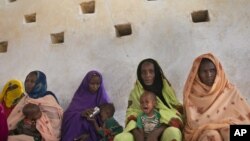Nigeria has one of the highest numbers of malnourished children in the world But data released this week shows that a program run by the Nigerian government and the U.N. Children's Fund is saving children's lives by getting them to eat more nutritious food.
In Nigeria, approximately 1.7 million children under the age of five are severely acutely malnourished. About 361,000 die from causes linked to malnutrition every year.
Arjan de Wagt, UNICEF’s chief of nutrition in Nigeria, said the country’s north bore the brunt of the epidemic. He said the crisis was perpetuated by a combination of poverty, lack of education, early marriage and, in parts of the northeast, the insurgency by Islamist militant group Boko Haram.
“In the northern part of the country, it also means that education and literacy levels are lower. We also know that poverty in the northern part of the country is generally higher than we see in the south,” he said.
In 2009, the Nigerian government and UNICEF rolled out a pilot program that eventually expanded to 11 states in the north. The program, called Community-based Management of Acute Malnutrition, works by bringing in children and their parents or caregivers for weekly appointments at clinics, where they’re taught about topics like nutrition and breastfeeding.
The children are weighed and checked for illnesses; the families leave with supplies of high-nutrition food for the children.
The program appears to be getting results. De Wagt said that data released this week showed the program has cured up to 830,000 children of malnutrition, and saved thousands of lives.
“More than 200,000 children are alive today. And they wouldn’t have been alive if the program wouldn’t have been there,” he said.
Much remains to be done, in Nigeria and elsewhere. UNICEF says the 1.7 million malnourished children under five in Nigeria account for just a tenth of the total worldwide.





